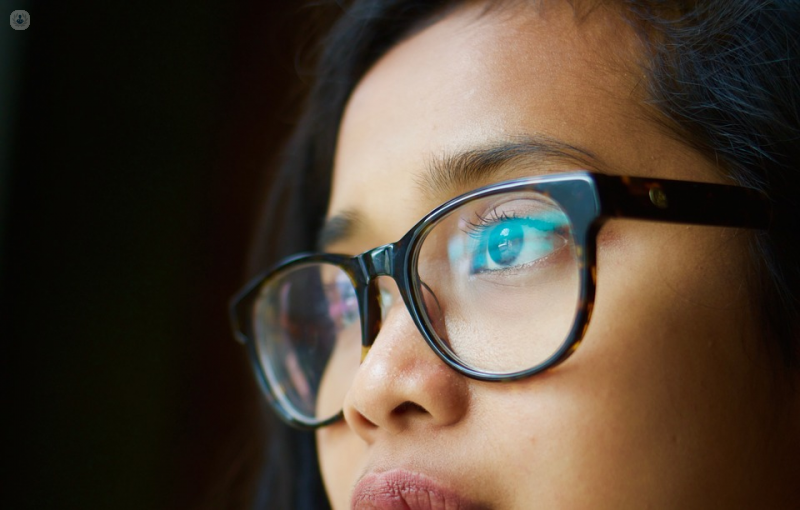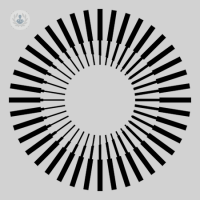Presbyopia
Mr Michael Tappin - Ophthalmology
Created on: 11-13-2012
Updated on: 09-06-2023
Edited by: Jay Staniland
What is presbyopia?
Presbyopia, sometimes referred to as tired eyes, is a common age-related condition that affects the ability to focus on objects at close distances. and the ability to maintain a clear image of an approaching object. It commonly affects people over the age of 40, and is related to the natural lens losing it's flexibility as we age, making it difficult to focus on objects from near to far.

Prognosis of presbyopia
Presbyopia is a generally stable condition, and does not worsen significantly over time, once it develops. However, the condition does progress with ageing, with the need for reading glasses developing over time. Glasses or contact lenses effectively manage the condition, allowing the focusing on the objects close up.
What are the symptoms of presbyopia?
Presbyopia can cause the inability to focus up close; it can also cause headaches when reading or looking at screens.
Tests for presbyopia
Presbyopia is treated by an ophthalmologist or optometrist, who will study the patient’s ability of focusing, measuring the amplitude and the monocular and binocular flexibility. If the ability to focus is unbalanced, exercises that have been proven to work will be recommended. These exercises involve visual therapy at close vision with different strength lenses. Flipper training for short distance focusing or changing focus from long to short distance using the Hart Chart is also used, among other techniques.
What causes presbyopia?
Presbyopia occurs mainly due to a loss of lens elasticity, which is the eyes natural lens for focusing on objects. Over time, the lens loses elasticity and the ability to focus. Other causes of presbyopia include:
- Changes to the lens shape - the lens can become thicker with age, affecting its ability to change shape when focusing near and far.
- Weakening of the ciliary muscles - these muscles are responsible for changing the shape of the lens, losing the ability to effectively chaneg focus.
- Changes to pupil size - the pupils get smaller as we age, restricing the amount of light that enters the eye, making it more difficult to focus in low-light conditions.
How can presbyopia be prevented?
Presbyopia can’t be prevented, as it is a condition associated with the ageing process. Even so, it is important to have your eyes tested regularly, especially after the age of 40, to detect any age related conditions.
What is the treatment for presbyopia?
There isn’t a permanent treatment for presbyopia, there are however techniques to compensate for loss of focus. The most common one is glasses, and there are different types of lenses according to the issue:
- Bifocal lenses: for far and near vision.
- Trifocal lenses: for short, medium, and long distance vision.
- Progressive lenses (also called multifocal lenses): the upper part of the lens is for distance, the lower part for near, and the middle part for all distances.
- Occupational lenses: for short and intermediate distances; particularly suitable for people who work with computers.
Even so, surgery is quite often used to treat presbyopia. There are different techniques:
- Laser surgery: the cornea is moulded to increase the depth of focus and compensate for the loss of focusing ability.
- Intracorneal lens implants: are placed on the cornea and change the corneal curvature to address the inability of accommodation.
- Intraocular lens implant: the lens is replaced by an intraocular lens, which can be monofocal, bifocal, or trifocal, depending on the distance reach needed.
What specialist should I see?
Tired eyes should be treated by an ophthalmologist.










